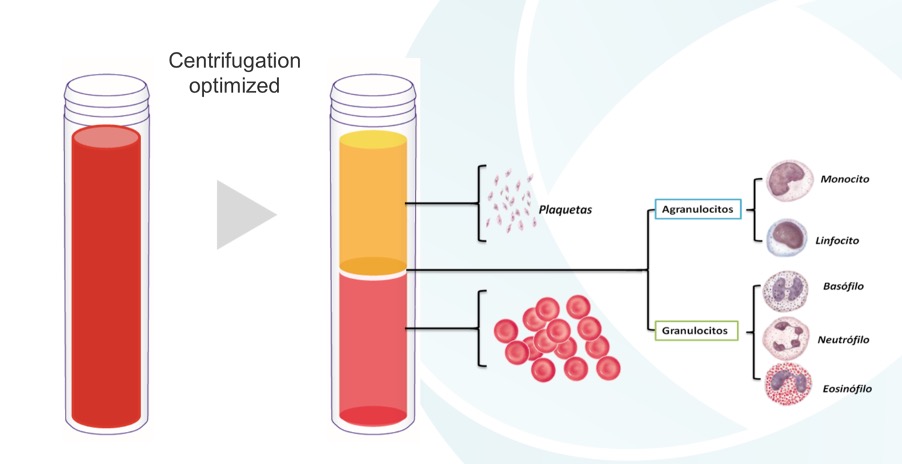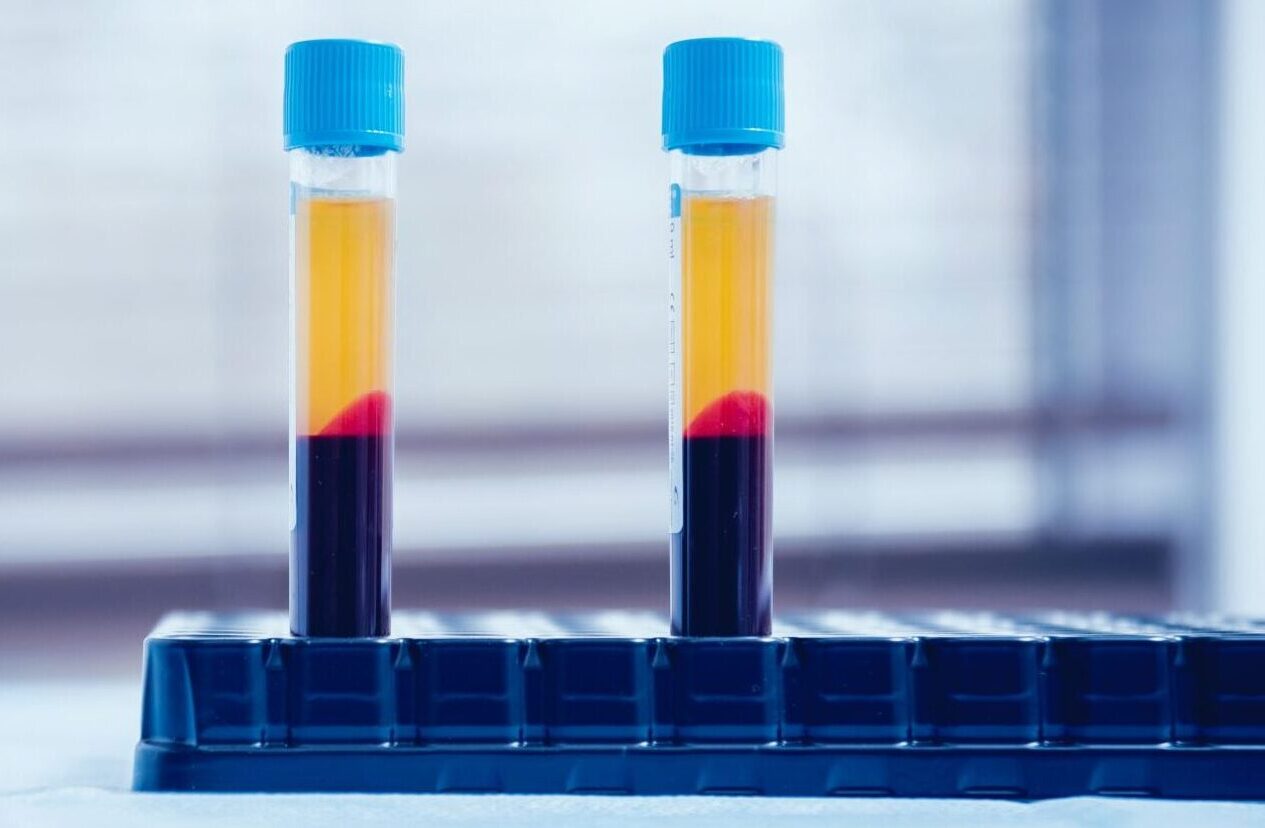We use PRP or platelet-rich plasma injections to treat musculoskeletal conditions such as arthritis and tendonitis. As PRP comes from your blood, we can optimise the action of platelet-rich plasma by following a few simple steps before the procedure. Likewise, your post-injection activities could also help recovery. PRP recovery time: what could we do to ensure platelet-rich plasma works better?
What is Platelet-rich plasma?

PRP is a blood sample with a higher concentration of platelets. We obtain PRP from whole blood from your arm. Blood is centrifuged so the heavier white and red cells move to the bottom. The top part of the sample contains plasma with a higher concentration of platelets. These platelet cells have a high concentration of growth factors and anti-inflammatory substances that help reduce pain and improve function in tendon and joint pathology.
PRP injections are an in-office procedure that takes about 45 minutes to complete. Generally, we use ultrasound to guide these injections into a joint or tendon.
Evidence for PRP injections
We have evidence for PRP injections for select musculoskeletal conditions but not all joint or tendon pathology.
The science of PRP is rapidly changing, so I will keep the evidence up-to-date. Nevertheless, PRP seems effective for the following musculoskeletal conditions:
- Knee arthritis: We have 23 RCT trials showing PRP is better than placebo or other injections, such as cortisone or hyaluronic acid. However, we have yet to determine the optimal PPR concentration or how many injections you need for the best effect.
- Hip arthritis: A recently published review found that PRP was more effective than cortisone and other injectables at reducing pain and improving function. In this study, one injection proved more effective than multiple.
- Tennis elbow: A review of studies shows benefits compared to cortisone or placebo, but not all studies are positive. Overall, PRP is a valuable addition for stubborn tennis elbow.
- Plantar fasciitis: Nine RCTs show that PRP is better than cortisone for heel spurs or plantar fasciitis. PRP might benefit plantar fasciitis that has failed other treatments, such as physiotherapy, insoles, and shockwave therapy. Moreover, we think PRP is a better and less harmful choice than cortisone.
- Gluteus medius tendonits or greater trochanteric syndrome. One good RCT shows PRP is better than cortisone in the medium and long term. In this study, the success rate of PRP at two years was 80% compared to 20% for cortisone.
- Rotator cuff tendonitis. A few studies have shown that PRP has a better effect than cortisone for rotator cuff tendonitis at 6-12 months.
- Achilles tendon partial tears. While there is little evidence for PRP effectiveness in Achilles tendonitis, we use PRP injections for partial or interstitial tears.
PRP has shown no benefit for joint arthritis in the thumb, fingers, shoulder or ankle. Moreover, no use for PRP has been demonstrated for ankle, foot and patellar tendonitis.
Risks of PRP injections
The risks of PRP are low because we use your blood to obtain the plasma, and we don’t add anything to the plasma.
Common side effects include:
- Soreness or pain after the injections. Generally, post-injection pain lasts for a few days. Often, tendon injections are more sore than joint injections.
- Infection. Like any injection, infection is possible. However, we think PRP is less likely to cause infection as your blood has natural antibiotic properties.
- Tendon rupture. Injecting into a tendon can increase the risk of tendon rupture. However, unlike cortisone, which weakens tendons, PRP does not negatively affect tendon structure. Nonetheless, tendon injections are unpredictable, so tendon rupture is always possible.
PRP injection recovery time: what should you do before and after PRP
What we do before and after a PRP injection will significantly affect the outcome. So, you must follow these simple steps to get the most out of this treatment.
How should you prepare for PRP?
We suggest the following simple instructions before your procedure to optimise the PRP effect:
- Hydrate well on the morning of the procedure. We suggest consuming 1.5L of fluid a few hours before your injection appointment.
- Avoid NSAIDs or Aspirin at least ten days before the procedure. These medications affect the function of platelets and will reduce the body’s natural healing response. Speak to your doctor if you are taking Aspirin for blood-thinning or heart causes.
- Reduce or stop caffeine intake for 24-48 hours before the injection.
- Inform your doctor about any medications or supplements, as some may need to be temporarily discontinued.
PRP injection recovery time: what should you do after an injection?
After the PRP injection, you should follow a strict post-injection protocol to optimise the natural healing effect of PRP. These post-injection guidelines include:
- After the PRP injection, the injected area should be rested for a specified period, depending on the location and the treated condition.
- Pain management. You could experience short-term pain after a joint or tendon injection. Generally, joint injection soreness lasts a few days, while a tendon injection lasts up to 7 days longer. Pain-relieving techniques include regular ice 15 mins every 4 hours to the injected area to reduce swelling. Also, over-the-counter or prescriptive analgesia (examples include paracetamol, Co-Codamol, and Co-Dydramol) may be needed for the first 24-48 hours after an injection.
- Avoid NSAIDs such as ibuprofen or Aspirin for at least two weeks after a PRP injection.
How long should you rest after the PRP injection?
For a lower body joint injection, you should rest the joint for two days. It would be best if you kept your walking distance to a minimum. After three days, you can return to swimming and upper body weights. After a week, you can return to light walking and non-impact activities such as yoga and walking. Lighter lower body weights and cross-training can be started after two weeks. After three weeks, you can re-engage with running and heavier lower body weights, depending on the severity of your joint pathology.
For tendon injections, you may need a lengthier recovery. You may require a CAM walker boot for 7-10 days for some tendons, such as the Achilles. Generally, rest your tendon for three days. Swimming without kicking is allowed after day three. After ten days, restart walking. After two weeks, you can re-engage in crosstraining and physiotherapy exercises. Return to running will be guided by your doctor and physiotherapist, and it will depend on your strength and tolerance for tendon-loading exercises.
An example of a PRP injection recovery time for tennis elbow:
- Day 0-2: Rest the elbow for two days. Apply regular ice and take simple analgesia for pain.
- Day 3-7: Re-engage with lower body activities, including gym, cycling and running.
- Day 8-14: Restart exercises targeting tennis elbow. Review by a physiotherapist after ten days.
- Day 14 -28: Progress with tendon loading exercises and re-engage with lighter upper body weights.
- Day 28 onwards: Resume heavier upper body weights and progress as directed by your therapist.
An example of a PRP injeciton recovery time for a partial tear of the Achilles tendon:
- Day 0-10: Rest the Achilles in a short walking boot. On day 2, resume upper body weights. On day 5, re-engage with swimming without kicking.
- Day 11-24: Commence seated calf raises exercises from the floor using a TheraBand or seated calf raise machine 3xweekly.
- Day 24-42: Commence standing single-leg calf raises from the floor and continue seated leg calf raises 3x weekly. Speak to your doctor about progression, including adding weighted isometric holds. Continue cycling and walking.
- Day 42 onwards: Commence a graded running programme.
Example of PRP injection recovery time for plantar fasciitis
- Day 0-7: Rest your foot in a short walking boot. Resume upper body weights on day 2. Re-engage with swimming on day 3.
- Day 7-14: Wear a supportive training shoe for gentle walking. Continue upper body weights and swimming. Start foot intrinsic strengthening exercises.
- Day 14-21: Start cycling and increase walking (10-15 minutes daily). Commence seated calf raises from floor level using therabands or seated calf raise machine 3x/week.
- Day 21-28: Add standing weighted calf raises to seated calf raises. Continue cycling, swimming, and walking faster (greater than 20 minutes).
- Day 28-42: Start progressive walk/run program.
Example of PRP injection recovery time for knee arthritis:
- Day 0-2: Rest knee for two days.
- Day 3-7: Resume upper body weights and swimming.
- Day 7-14: Return to walking, cycling and cross-training. Resume lighter, lower body weights.
- Day 14-21: Re-engage in heavier lower leg weights.
- Day 23 onwards: Return to brisk walking and running.

How soon can I walk after a PRP injection?
You can start walking the next day for upper body tendon and joint injections. We suggest rest from walking for a week after a PRP injection for lower body joint injections. Generally, lower limb tendon injections need a longer recovery time, so we recommend walking after ten days.
Other frequently asked questions about PRP injection recovery time
Is a higher concentration or platelet count better?
Some doctors state that a higher concentration or platelet dose is more effective than a lower one. However, the evidence for greater effectiveness is contentious.
A recent study looking at the effectiveness of PRP in knee arthritis found that a PRP system using an average platelet count of 5 billion did better than systems that used a count of 2.5 billion. A recent review found that PRP systems that used a higher platelet concentration (of at least 4x blood) did better than low concentration systems.
Two to three standard PRP injections or one super-concentrated PRP injection can give higher platelet doses and concentrations. An example of a super-concentrated PRP system is Arthrex ACP Max.
A doctor on YouTube said that a 10 billion platelet count is the optimal dose for osteoarthritis. Is this true?
No. This view is based on one study published in 2021 and is fundamentally flawed.
Other studies show the opposite – higher platelet doses lead to a less effective result on pain and function.
We don’t know the optimal platelet count for knee arthritis, but doctors should aim for a platelet dose approaching 5 billion platelets. This dose can be achieved with one or multiple doses. Arthrex ACP Max is an example of a one-shot super-concentrated PRP.
Can I drive after a PRP injection?
We recommend you avoid driving immediately after an upper or lower body PRP injection. However, you should be able to drive the following day.
Why no alcohol after PRP injection?
Increased levels of alcohol are associated with decreased platelet activation. So, we recommend you avoid alcohol for two days before and up to three days after a PRP injection.
Do certain prescriptive medications affect PRP?
Yes. We know that NSAIDs have a direct effect on reducing platelet activation. You should avoid NSAIDs and Aspirin for ten days prior and two weeks after a PRP injection.
Do you need to stop caffeine before a PRP injection?
We know that caffeine reduces platelet activation. Therefore, we recommend that you avoid caffeine for two days before and two days after a PRP injection.
How long does PRP take to work?
PRP works by the platelets releasing growth factors and anti-inflammatory substances. These chemicals attract other reparative substances and cells to the injured area, causing an inflammatory response. This is why we experience soreness or pain after the procedure. After the inflammatory response, the injured area heals.
So, after a PRP injeciton, we often feel worse for a few weeks before the injured area feels better. For joints, we see a positive effect after four weeks. Tendon injuries take a little longer – up to 6-8 weeks.
Final word from sportdoctorlondon regarding PRP injection recovery time
You can take simple steps before and after PRP injections to make the procedure more effective. Post-PRP injection recovery is usually faster for joint arthritis than tendonitis.
Other related topics:
- PRP therapy: Frequently Asked Questions
- Arthrex ACP Max: The New Generation of PRP
- PRP injections for joints and tendons
- PRP injection for tennis elbow
- PRP injections for knee arthritis
- PRP for tendonitis: what is the best formula?



Leave A Comment